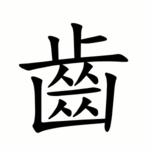
Radical 1 or radical one (一部) meaning "one" is one of the 6 Kangxi radicals composed of 1 stroke.
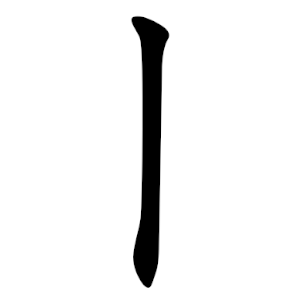
Radical 2 or radical line (丨部) meaning "vertically connected" is one of 6 of the 214 Kangxi radicals that are composed of only one stroke.
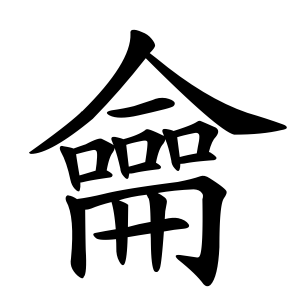
Radical 214 meaning "flute" is the only one of the 214 Kangxi radicals that is composed of 17 strokes, making it the radical that requires the most strokes.

Radical 3 or radical dot (丶部) meaning "to indicate an end" is one of six of the 214 Kangxi radicals that are composed of only one stroke.
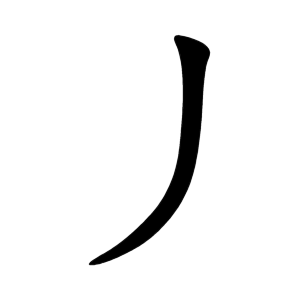
Radical 4 or radical slash (丿部) meaning "slash" or "bend" is one of 6 of the 214 Kangxi radicals that are composed of only one stroke.
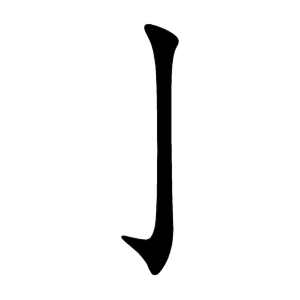
Radical 6 or radical hook (亅部) meaning "hook" is one of 6 of the 214 Kangxi radicals that are composed of only one stroke.

Radical 12 or radical eight (八部), meaning eight or all, is one of 23 of the 214 Kangxi radicals that are composed of two strokes. "八" is two bent lines that signal divide. Eight is the single-digit number that can be divided by two the greatest number of times.
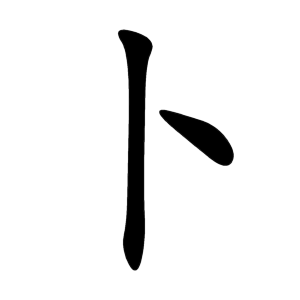
Radical 25 or radical divination (卜部) is one of the 23 Kangxi radicals composed of two strokes.
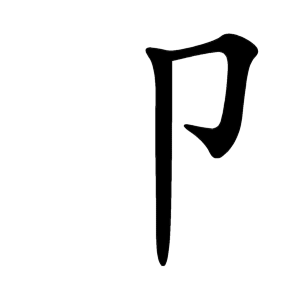
Radical 26 or radical seal (卩部) meaning "seal" is one of the 23 Kangxi radicals composed of two strokes.
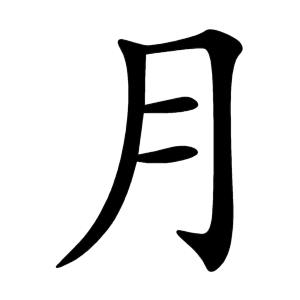
Radical 74 or radical moon (月部) meaning "moon" or "month" is one of the 34 Kangxi radicals composed of 4 strokes.

Radical 82 or radical fur (毛部) meaning "fur" is one of the 34 Kangxi radicals composed of 4 strokes.

Radical 95 or radical profound (玄部) meaning "dark" or "profound" is one of the 23 Kangxi radicals composed of 5 strokes.

Radical 98 or radical tile (瓦部) meaning "tile" is one of the 23 Kangxi radicals composed of 5 strokes.

Radical 109 or radical eye (目部) meaning "eye" is one of the 23 Kangxi radicals composed of 5 strokes.
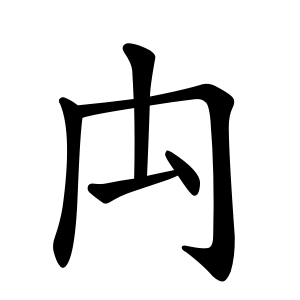
Radical 114 or radical track (禸部) meaning "rump" or "track" is one of the 23 Kangxi radicals composed of 5 strokes.

Radical 130 or radical meat (肉部) meaning "meat" is one of the 29 Kangxi radicals composed of 6 strokes. When used as a left component, the radical character transforms into 月 in Simplified Chinese and Japanese or ⺼ in modern Traditional Chinese used in Hong Kong and Taiwan.

Radical 144 or radical walk enclosure (行部) meaning "go" or "do" is one of the 29 Kangxi radicals composed of 6 strokes.

Radical 191 or radical fight (鬥部) meaning "fight" is one of the 8 Kangxi radicals composed of 10 strokes.

Radical 200 or radical hemp (麻部) meaning "hemp" or "flax" is one of the 6 Kangxi radicals composed of 11 strokes. Historically, it is the Chinese word for cannabis.
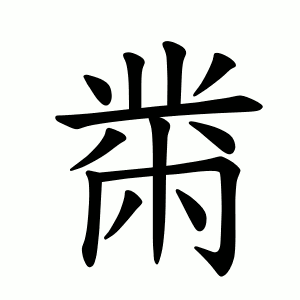
Radical 204 meaning "embroidery" or "needlework" is 1 of 4 Kangxi radicals composed of 12 strokes.
This page is based on this
Wikipedia article Text is available under the
CC BY-SA 4.0 license; additional terms may apply.
Images, videos and audio are available under their respective licenses.
